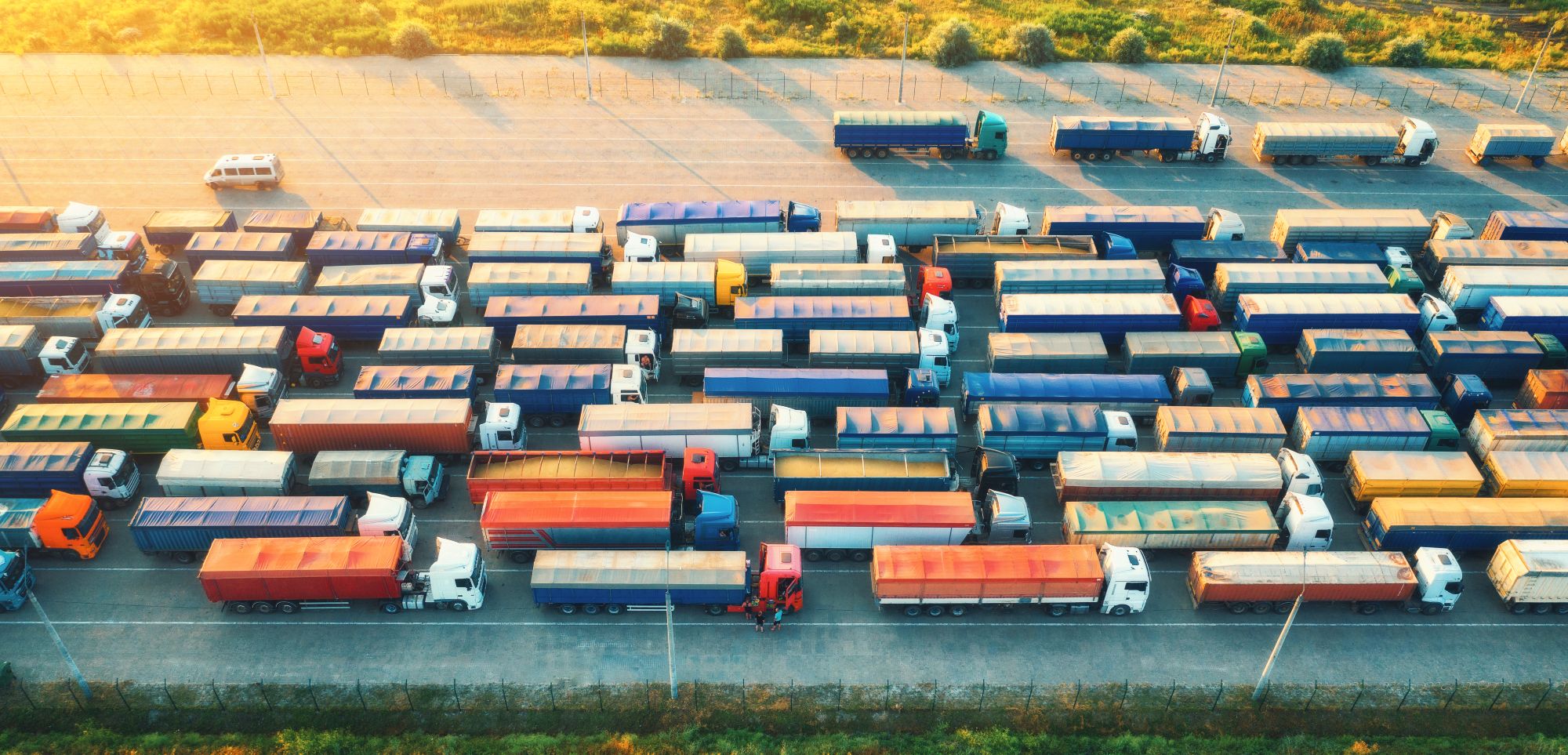
Guest
6 estrategias de gestión de flotas que transformarán su cuenta de resultados
Creado: 16/10/2025
•
Actualizado: 16/10/2025
Los gestores de flotas del Reino Unido se enfrentan a retos financieros en muchos frentes. La escalada de los costes operativos debida a la volatilidad de los precios del combustible, la intensificación de las presiones de transformación hacia la sostenibilidad, la adquisición de vehículos con un uso intensivo de capital, la escasez crónica de talentos y los tiempos de inactividad prolongados y no programados perjudican a la cuenta de resultados.
Si ya ha invertido en soluciones básicas para optimizar las rutas, mejorar el rendimiento de los conductores, minimizar el consumo de combustible, supervisar el estado de los activos y programar el mantenimiento preventivo, pero no ha obtenido beneficios significativos, considere la posibilidad de adoptar estas seis estrategias prácticas para registrar ingresos netos positivos de forma sistemática.
1. Crear un plan detallado del ciclo de vida de la flota
Muchos profesionales de flotas ven los activos como inevitables pozos de dinero y han llegado a un acuerdo con su tendencia a agotar los recursos. Esta noción normaliza el consumo ineficiente de combustible, los costes de mantenimiento excesivamente elevados y los frecuentes tiempos de inactividad por averías repentinas. Los vehículos que no están en condiciones de circular ponen en peligro la seguridad del conductor y de la carga, lo que se traduce en un aumento de las tarifas de los seguros y en un daño duradero para la reputación de la empresa.
Desarrollar un ciclo de vida estructurado de la flota y una estrategia de sustitución es esencial para retirar determinados vehículos antes de que perjudiquen a las arcas de la empresa. Le ayuda a gestionar su presupuesto con prudencia, permitiéndole tomar decisiones informadas basadas en objetivos a largo plazo en lugar de en necesidades inmediatas.
Priorice el coste por milla, la edad del vehículo y el kilometraje. Estas métricas vitales indican cuándo un activo se convierte en un buen candidato para la retirada en lugar de esperar a que quede inoperativo. Este enfoque proactivo reduce el coste total de propiedad, permitiéndole revender los activos en declive mientras su valor es relativamente alto. Los ingresos de la venta pueden compensar el precio de adquisición e integración de vehículos con capacidades parciales de automatización en su flota.
2. Reforzar la contratación de personal
La escasez crónica de mano de obra en el sector de la logística incrementa los costes de gestión de flotas debido al aumento de los salarios, la prolongación de los plazos de reparación de los vehículos y las pérdidas derivadas de los retrasos y el incumplimiento de los plazos. Este problema es anterior a la pandemia, y el Brexit no ha hecho sino agravarlo. En 2023, UK in a Changing Europe y Centre for European Reform calcularon que el Reino Unido registraría un déficit de 330.000 trabajadores tras el fin de la libertad de circulación.
La clave está en dar a conocer la logística como una carrera apasionante desde la base. Los gestores de flotas podrían hacer más por presentar el sector a los estudiantes de primaria y secundaria. Explicar qué hacen los conductores de camiones y los mecánicos y su contribución a la sociedad puede dar prestigio a estas profesiones. Los programas de aprendizaje pueden hacer maravillas, ya que la encuesta de Logistics UK de 2022/2023 reveló que el 68% de las personas interesadas en la logística los buscan.
3. Reducir los cuellos de botella en las instalaciones
Un mal diseño del lugar de trabajo es un dilema infravalorado en la gestión de flotas. Las ralentizaciones en el proceso de cumplimiento de pedidos pueden desencadenar un efecto dominó que, en última instancia, infla los costes operativos. Pueden provocar un aumento de los tiempos muertos, la infrautilización del talento, el incumplimiento de los plazos de entrega y la insatisfacción del cliente. Las ineficiencias del flujo de trabajo pueden obligarle a reasignar recursos, reorganizando conductores y vehículos y cambiando rutas para compensar los retrasos.
La desorganización relacionada con las instalaciones no es competencia de los gestores de flotas. Es importante colaborar estrechamente con la dirección del almacén para aumentar el flujo lógico y la velocidad de movimiento de las mercancías dentro del espacio. Mejoras sencillas como instalar suficientes luces LED de gran altura y puertas que se abran a 61 centímetros por segundo (https://www.cornelliron.com/rolling-door-blog/Cornell-blog/how-high-speed-doors-increase-warehouse-productivity) pueden reducir los errores y aumentar la productividad.
Aproveche la tecnología para garantizar una comunicación clara. Adoptar una solución de software que fusione o ayude a interoperar los sistemas de gestión de almacenes y flotas ofrece a todas las partes interesadas una visibilidad completa de las operaciones de cada departamento. Formar un equipo interfuncional cultiva una cultura de colaboración y responsabilidad compartida, responsabilizando a todos colectivamente de los errores y evitando señalar con el dedo.

4. Modernizar los procesos de reparación
Es necesario un enfoque innovador y pragmático del mantenimiento de los vehículos para reducir los tiempos de inactividad no programados. Las puestas a punto proactivas y la programación automática del mantenimiento son vitales para prolongar la vida útil de los activos, pero la digitalización de las inspecciones y la racionalización de las reparaciones son igual de importantes para detectar a tiempo las señales de alarma, restablecer rápidamente la aptitud para circular de los activos y ayudar a los técnicos a trabajar con eficiencia.
Las inspecciones móviles previas al viaje son fundamentales para el mantenimiento preventivo de los activos y el cumplimiento de la normativa. Las aplicaciones capturan datos en tiempo real, permiten a los conductores comunicar los problemas a la dirección y facilitan el mantenimiento de registros para su revisión, análisis y elaboración de informes. Las órdenes de trabajo digitales ayudan a supervisar las reparaciones en toda la flota y a garantizar que ninguna afecte a los plazos de entrega.
Los equipos actualizados facilitan la vida a sus técnicos y complementan las iniciativas para aprovechar sus puntos fuertes a la hora de asignar tareas. Las últimas herramientas de diagnóstico pueden suponer un gasto importante, pero también un gran ahorro de tiempo. Se amortizan reduciendo el desgaste prematuro de los componentes, evitando averías y ayudándole a negociar tarifas de seguro más bajas. Toda nueva tecnología tiene una curva de aprendizaje, así que valore la formación adecuada para actualizar a su personal en consecuencia.
5. Crear una red de mecánicos de terceros
En el Reino Unido, los vehículos de flota en buen estado pueden averiarse a mitad de camino debido al estado de las carreteras. Según un informe de enero de 2024 con datos recogidos por 7.000 usuarios de Stan the App, había 1,5 millones de baches en las calzadas británicas. Esta cifra sólo cubría el 13% de la red de carreteras del país, lo que sugiere que el número real de defectos podría alcanzar los 11,5 millones.
Las zonas con clima más frío y húmedo son más propensas a tener depresiones en el firme de las carreteras. Los gobiernos locales rellenan millones de baches al año, por lo que puede ser difícil planificar rutas con antelación para evitarlos. La integración de funciones autónomas en los vehículos de flota, como la detección de objetos mediante aprendizaje profundo y la suspensión adaptativa, debería ayudar, pero evitar los baches en tiempo real sigue siendo un reto.
Los gestores de flotas prudentes se anticipan a las averías independientemente de lo bien mantenidos que estén sus activos y se centran en estar preparados. Trabajan con mecánicos móviles locales preaprobados y talleres de reparación de automóviles independientes para arreglar los vehículos averiados, minimizar el tiempo de inactividad y fomentar la productividad y la seguridad de los conductores.
Investiga a los técnicos de automoción autónomos verificando sus credenciales, conociendo su especialización y comprobando sus herramientas. Los mecánicos subcontratados deben ser el último recurso, así que forma a tus conductores en la resolución de problemas básicos y equípalos con el equipo adecuado.
6. Integrar los vehículos autónomos en las operaciones de última milla
Dejar la entrega de última milla en manos de sistemas de conducción autónoma puede hacer que este aspecto crítico de la logística sea más eficiente y menos costoso. Empresas de renombre como Amazon, FedEx y UPS han utilizado sus grandes recursos para poner a prueba la entrega autónoma en la última milla, demostrando que las furgonetas sin conductor y los drones podrían reducir los costes operativos de la logística urbana y aumentar la satisfacción del cliente.
El éxito de los proyectos piloto de integración de vehículos autónomos debería inspirar a las organizaciones con flotas más pequeñas a innovar. Sin embargo, la elevada inversión inicial es sólo uno de los obstáculos a los que se enfrentan muchos gestores de flotas. La infraestructura, la normativa y la aceptación de los consumidores son también consideraciones importantes.
Afortunadamente, el Parlamento británico ha aprobado la Ley de Vehículos Automatizados de 2024 para sentar las bases normativas de las operaciones autónomas de última milla. En junio de 2025, la diputada Lilian Greenwood informó de que el gobierno seguía trabajando en las directrices, lo que indicaba que los responsables políticos no estaban escatimando esfuerzos para inspirar a las partes interesadas una vez que se aplique la ley.
Estrategias para maximizar el tiempo de actividad de la flota
Revisar las operaciones de su flota es crucial para mejorar sus resultados, pero cualquier cambio conlleva oportunidades y riesgos. Los gestores pueden probar varias estrategias, desde planes detallados del ciclo de vida hasta la integración de vehículos autónomos. Con previsión, innovación, creatividad, colaboración, pragmatismo e ingenio, puede resolver los puntos débiles más acuciantes y superar nuevos retos para salir ganando.




